| View previous topic :: View next topic |
| Author |
Message |
JMC

Joined: 29 May 2018
Posts: 178
Location: London, UK
|
 Posted: Wed Nov 27, 2019 2:48 pm Post subject: 40mm lens made from Thorlabs parts Posted: Wed Nov 27, 2019 2:48 pm Post subject: 40mm lens made from Thorlabs parts |
 |
|
JMC wrote:
After working on UV and IR imaging for a while, I found myself getting more interested in quirky lens, and especially lenses for UV. A while ago while searching for information I came across something called a Hanovia Kalosat Spectral Diffusion lens, which was a large format lens with a single quartz element. Having failed to locate one for sale (I guess they are very rare) I thought, why not make something similar. I also came across one of Dr Klaus Schmitts posts where he had done something similar.
My version is based around a Thorlabs 40mm focal length, 1" diameter, UV silica biconvex lens with no coatings on it. I got a bunch of other fittings from Thorlabs at the same time so I could add an adjustable aperture, make it M42 mount, and add a 52mm filter ring on the front. Very impressed with Thorlabs, great to deal with. This is what it looks like;
#1
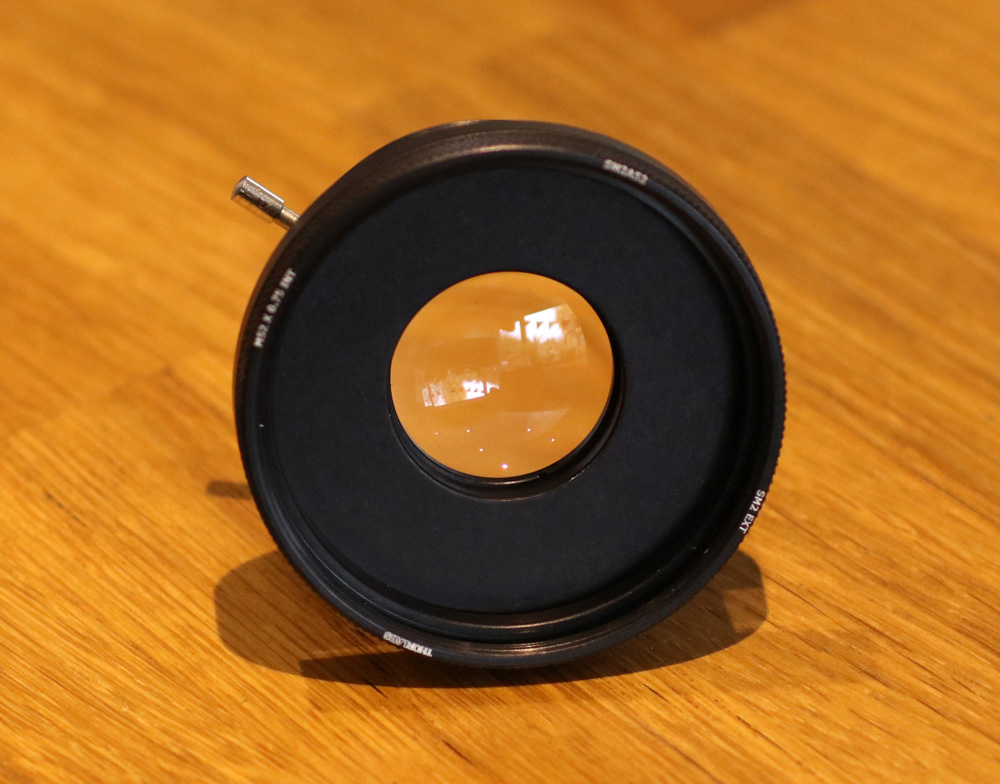
#2
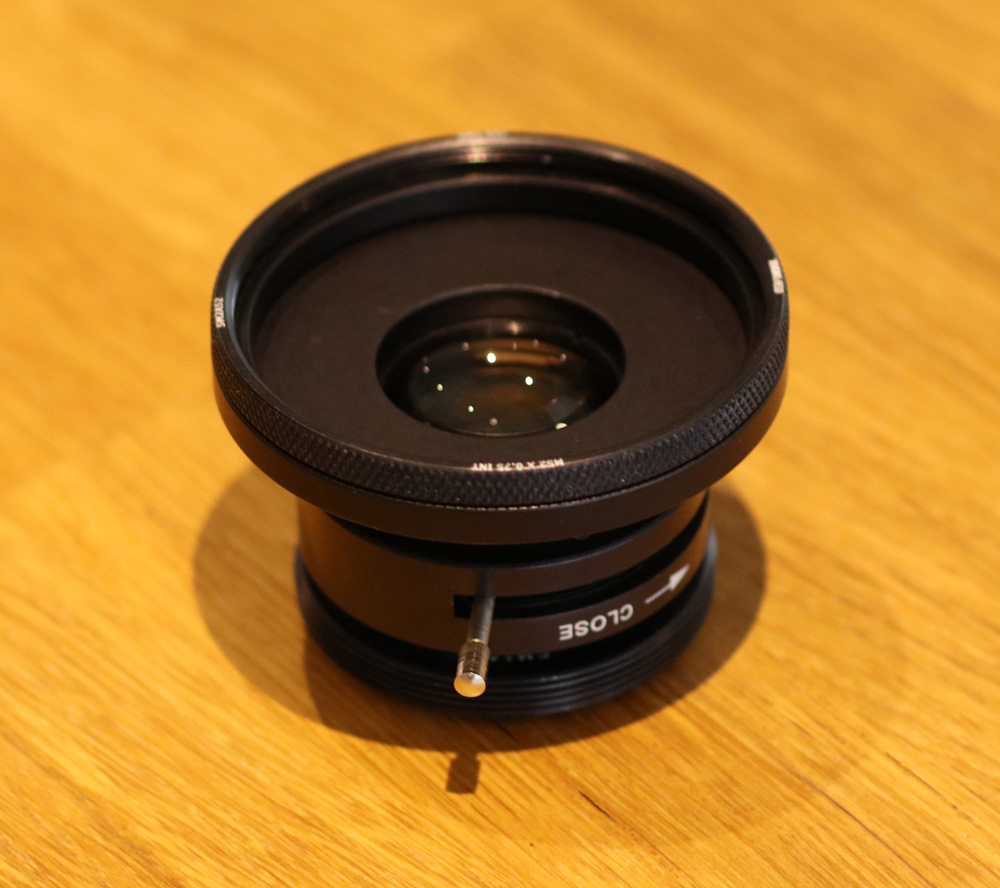
#3
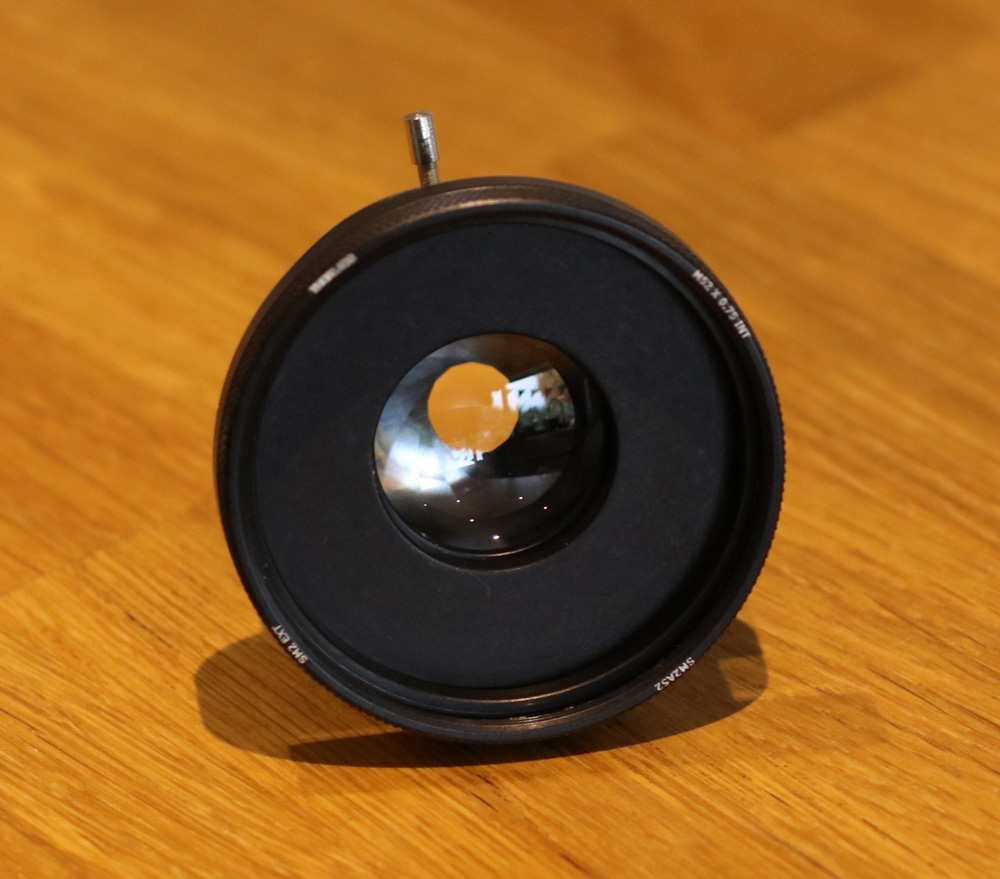
#4
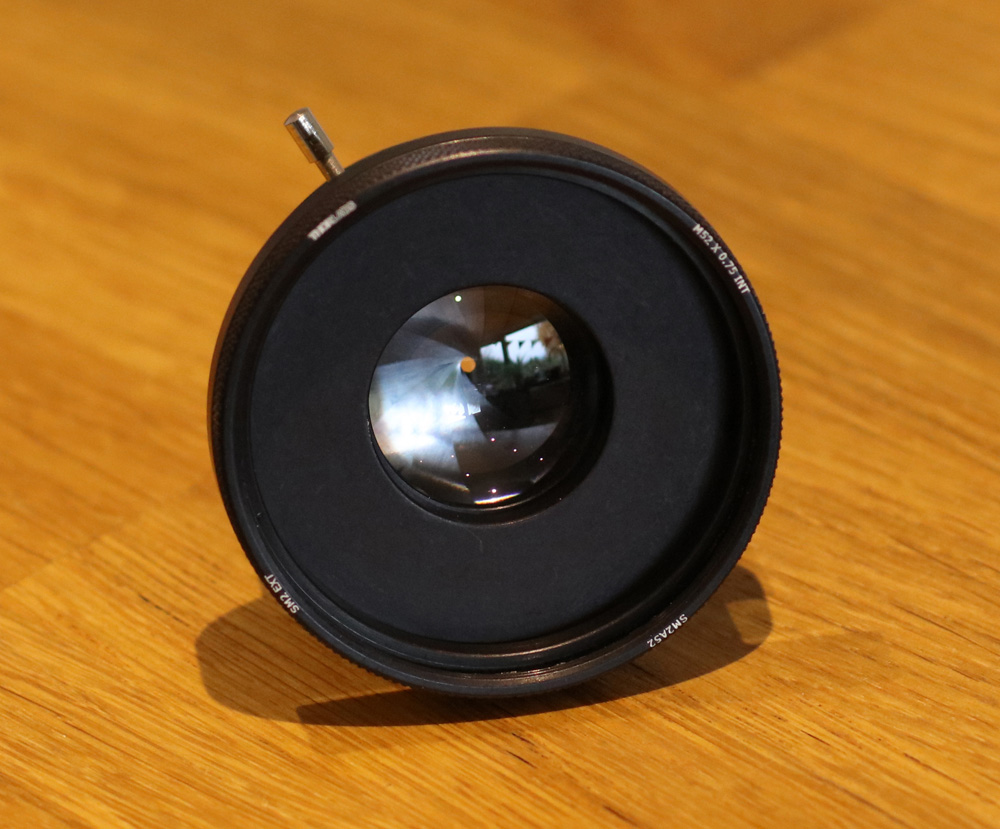
#5
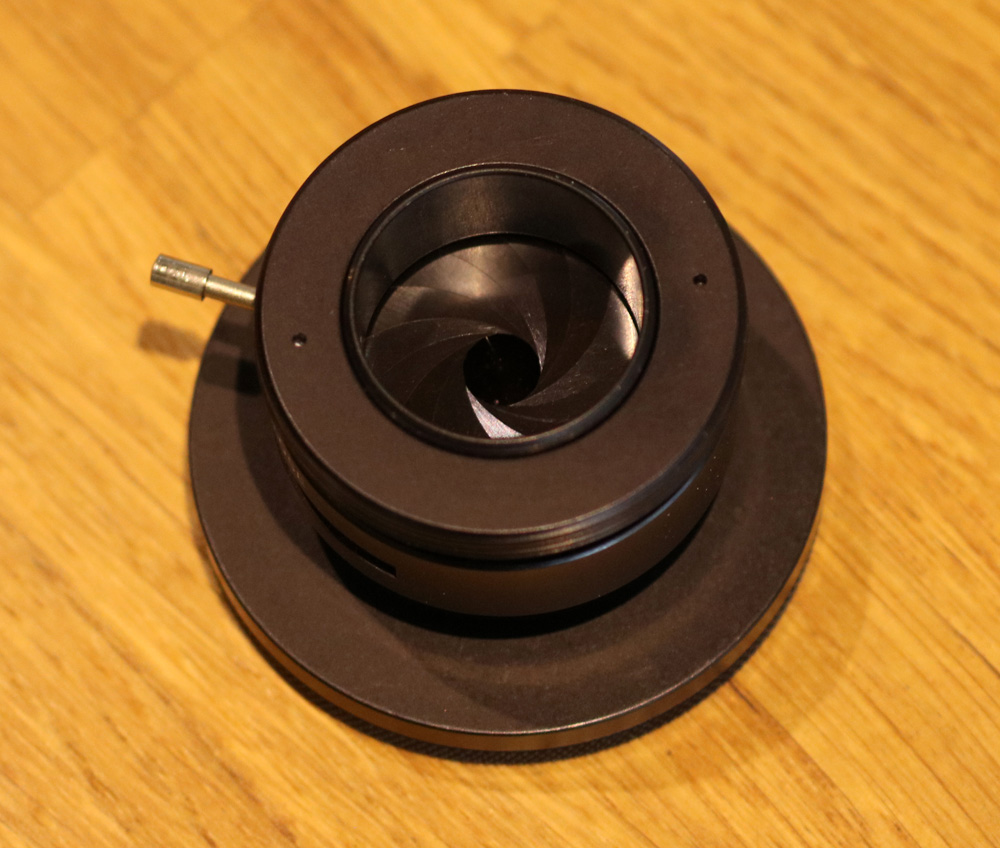
The aperture is quite a nice one - opens up to 25mm, and closes down to a couple of mm. So in theory, this is a 40mm f1.6 lens wide open. After fitting this together, I fitted it on the Eos 5DSR camera, just fitting it direct on to the M42 adapter. Of course, this was macro only, given the flange to focal plane distance on the EOS. Wide open it was very very soft and glary. Below are a couple of shots in my garden with it stopped down. Nice, typical rainy day here.
#6

#7
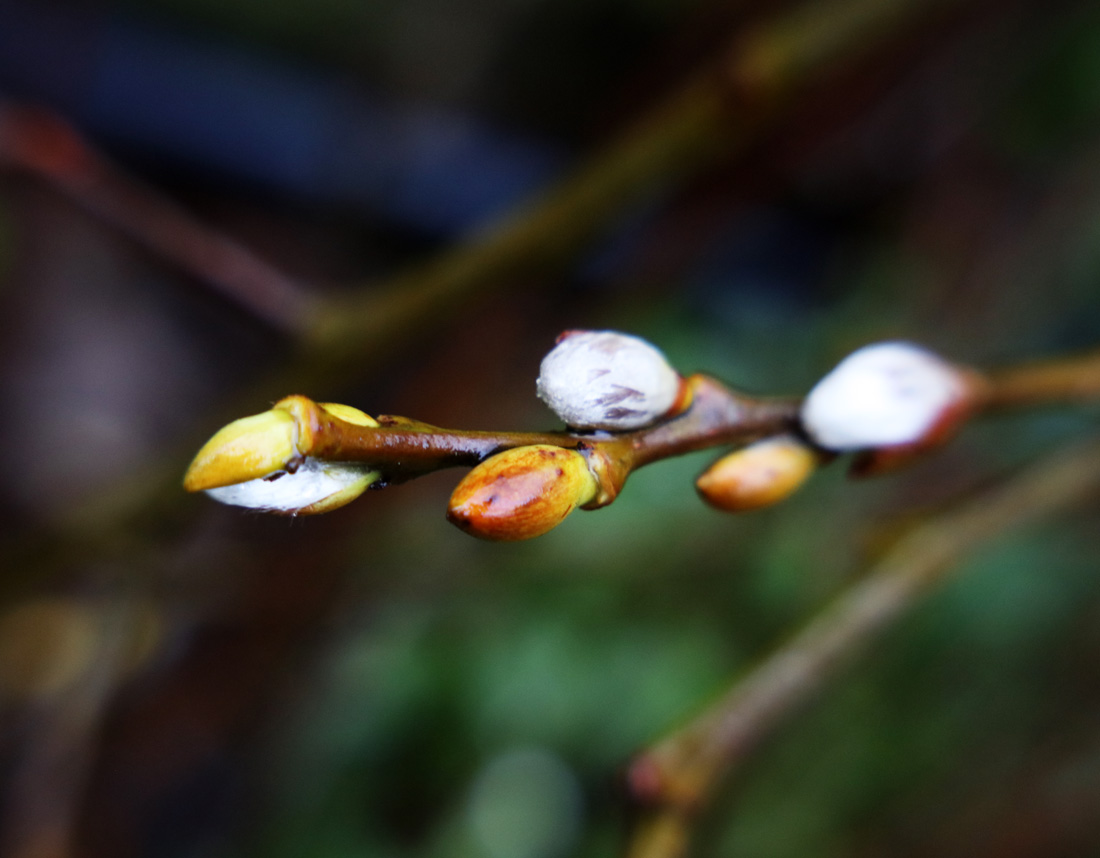
As another quick experiment, I wondered what it was like in IR. This is a shot of my garden with a 40mm EOS pancake lens on the EOS 5DSR camera, taken through the window (rain had returned again at this point). Normal colour image.
#10
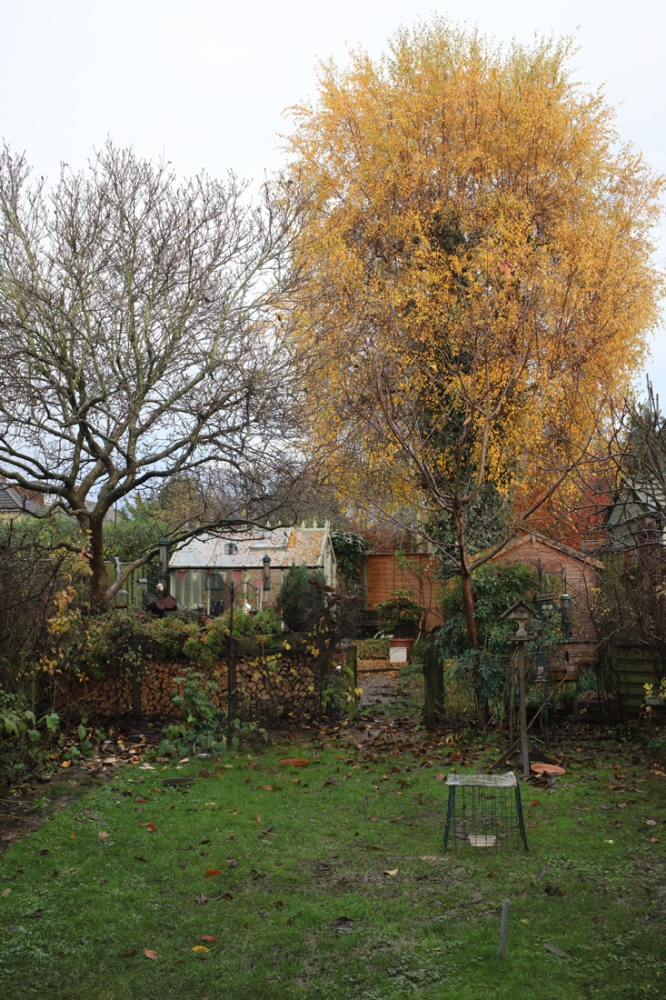
The a couple of shots from my multispectral converted Sony A7III. These are IR shots with a 720nm longpass IR filter. Firstly with the Eos 40mm lens and IR filter.
#8
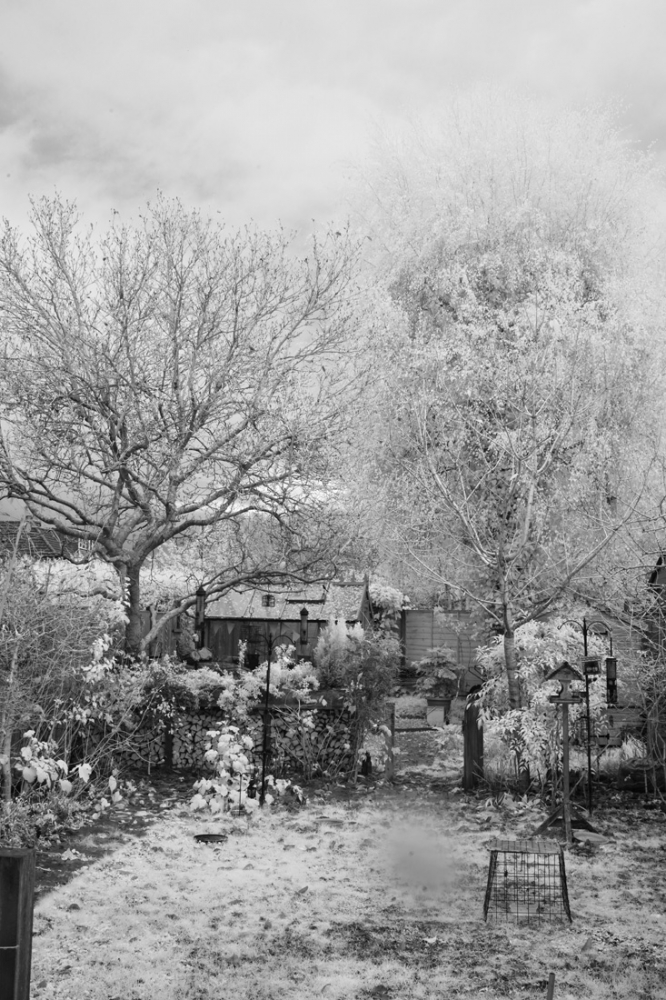
Secondly with the Thorlabs 40mm silica lens and IR filter. Same exposure as image #8.
#9
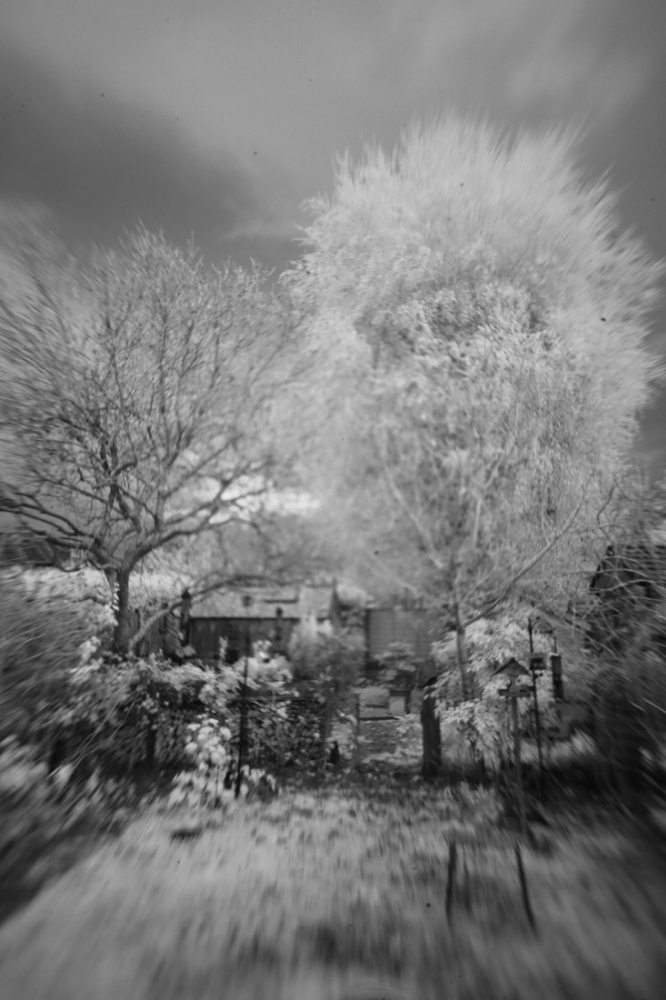
Contrast was boosted for bothe IR images, curves tweaked, but both in similar ways. Yes, my sensor is dirty. The small aperture on the silica lens really shows that up. On the A7III the is much further away as the FFD is much smaller than the EOS. Will be able to use helicoids on this setup. The blob on image #8 towards the bottom is a rain drop from the window I was shooting through.
I'm looking forward to trying it in the UV (when we get some here). I also plan on getting a 40mm focal length plano convex lens, and perhaps even a 40mm meniscus lens at some point to compare them with this biconvex one. |
|
| Back to top |
|
 |
kds315*


Joined: 12 Mar 2008
Posts: 16657
Location: Weinheim, Germany
Expire: 2021-03-09
|
 Posted: Wed Nov 27, 2019 4:25 pm Post subject: Posted: Wed Nov 27, 2019 4:25 pm Post subject: |
 |
|
kds315* wrote:
Congrats Jonathan, looks very nice (and useful!) to me!
I had used parts from other (enlarger) lenses back then and fused silica lenses I bought from surplus.
Stopped down it delivered quite useful results....
_________________
Klaus - Admin
"S'il vient a point, me souviendra" [Thomas Bohier (1460-1523)]
http://www.macrolenses.de for macro and special lens info
http://www.pbase.com/kds315/uv_photos for UV Images and lens/filter info
https://www.flickr.com/photos/kds315/albums my albums using various lenses
http://photographyoftheinvisibleworld.blogspot.com/ my UV BLOG
http://www.travelmeetsfood.com/blog Food + Travel BLOG
https://galeriafotografia.com Architecture + Drone photography
Currently most FAV lens(es):
X80QF f3.2/80mm
Hypergon f11/26mm
ELCAN UV f5.6/52mm
Zeiss UV-Planar f4/60mm
Zeiss UV-Planar f2/62mm
Lomo Уфар-12 f2.5/41mm
Lomo Зуфар-2 f4.0/350mm
Lomo ZIKAR-1A f1.2/100mm
Nikon UV Nikkor f4.5/105mm
Zeiss UV-Sonnar f4.3/105mm
CERCO UV-VIS-NIR f1.8/45mm
CERCO UV-VIS-NIR f4.1/94mm
CERCO UV-VIS-NIR f2.8/100mm
Steinheil Quarzobjektiv f1.8/50mm
Pentax Quartz Takumar f3.5/85mm
Carl Zeiss Jena UV-Objektiv f4/60mm
NYE OPTICAL Lyman-Alpha II f1.1/90mm
NYE OPTICAL Lyman-Alpha I f2.8/200mm
COASTAL OPTICS f4/60mm UV-VIS-IR Apo
COASTAL OPTICS f4.5/105mm UV-Micro-Apo
Pentax Ultra-Achromatic Takumar f4.5/85mm
Pentax Ultra-Achromatic Takumar f5.6/300mm
Rodenstock UV-Rodagon f5.6/60mm + 105mm + 150mm
|
|
| Back to top |
|
 |
arri

Joined: 13 Jul 2014
Posts: 95
|
 Posted: Sun Mar 21, 2021 8:56 am Post subject: Posted: Sun Mar 21, 2021 8:56 am Post subject: |
 |
|
arri wrote:
I found this old thread while searching for information about the Kalosat lens and I want to give a hint to use single lens elements.
A biconvex lens ist not the perfect choice, a convex/concave lens is much better, the concave side to the objects and the aperture in front of it.
All old landscape lenses are made in this style, the Kalosat as well.
Well stopped down it gives very good results with less distortion than a biconvex element.
Hers´s a sample I made with a single lens element and a 9x12cm glass plate, sensitive only to light in the range between 320-420nm.
 |
|
| Back to top |
|
 |
JMC

Joined: 29 May 2018
Posts: 178
Location: London, UK
|
 Posted: Sun Mar 21, 2021 1:19 pm Post subject: Posted: Sun Mar 21, 2021 1:19 pm Post subject: |
 |
|
JMC wrote:
Thanks Arri, yes I've been thinking about using a meniscus lens instead of a biconvex one, and it looks like it is definitely worth a try from what you say. |
|
| Back to top |
|
 |
kds315*


Joined: 12 Mar 2008
Posts: 16657
Location: Weinheim, Germany
Expire: 2021-03-09
|
 Posted: Sun Mar 21, 2021 4:13 pm Post subject: Posted: Sun Mar 21, 2021 4:13 pm Post subject: |
 |
|
kds315* wrote:
Hello Arri (Wolfgang?),
yes indeed, it is the classic "Meniscus" lens you talk about, which has often been used, like in that said KALOSAT lens.
Meniscus lenses in fused silica is a bit hard to come by, the company I knew who made some, unfortunately stopped making them, bummer.
Nice result!
_________________
Klaus - Admin
"S'il vient a point, me souviendra" [Thomas Bohier (1460-1523)]
http://www.macrolenses.de for macro and special lens info
http://www.pbase.com/kds315/uv_photos for UV Images and lens/filter info
https://www.flickr.com/photos/kds315/albums my albums using various lenses
http://photographyoftheinvisibleworld.blogspot.com/ my UV BLOG
http://www.travelmeetsfood.com/blog Food + Travel BLOG
https://galeriafotografia.com Architecture + Drone photography
Currently most FAV lens(es):
X80QF f3.2/80mm
Hypergon f11/26mm
ELCAN UV f5.6/52mm
Zeiss UV-Planar f4/60mm
Zeiss UV-Planar f2/62mm
Lomo Уфар-12 f2.5/41mm
Lomo Зуфар-2 f4.0/350mm
Lomo ZIKAR-1A f1.2/100mm
Nikon UV Nikkor f4.5/105mm
Zeiss UV-Sonnar f4.3/105mm
CERCO UV-VIS-NIR f1.8/45mm
CERCO UV-VIS-NIR f4.1/94mm
CERCO UV-VIS-NIR f2.8/100mm
Steinheil Quarzobjektiv f1.8/50mm
Pentax Quartz Takumar f3.5/85mm
Carl Zeiss Jena UV-Objektiv f4/60mm
NYE OPTICAL Lyman-Alpha II f1.1/90mm
NYE OPTICAL Lyman-Alpha I f2.8/200mm
COASTAL OPTICS f4/60mm UV-VIS-IR Apo
COASTAL OPTICS f4.5/105mm UV-Micro-Apo
Pentax Ultra-Achromatic Takumar f4.5/85mm
Pentax Ultra-Achromatic Takumar f5.6/300mm
Rodenstock UV-Rodagon f5.6/60mm + 105mm + 150mm
|
|
| Back to top |
|
 |
|
|
|
You cannot post new topics in this forum
You cannot reply to topics in this forum
You cannot edit your posts in this forum
You cannot delete your posts in this forum
You cannot vote in polls in this forum
|
